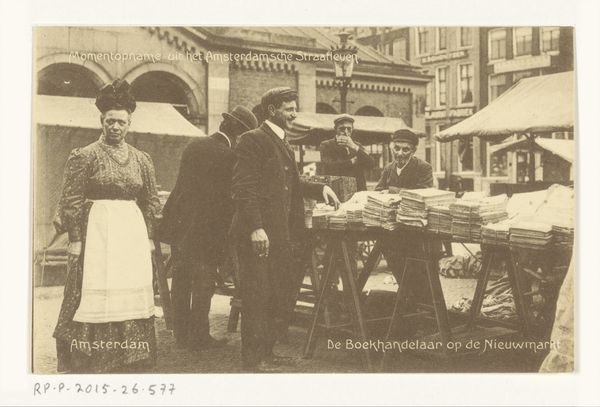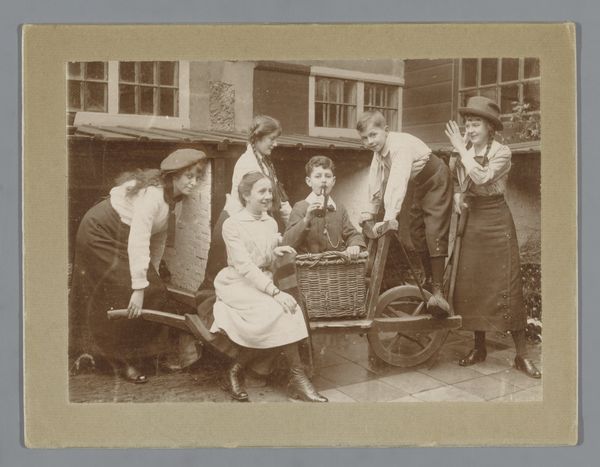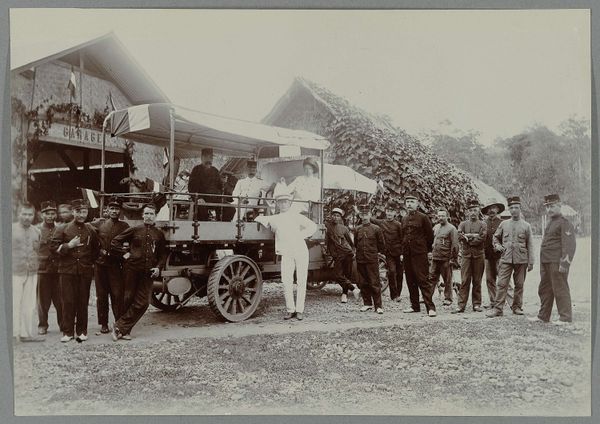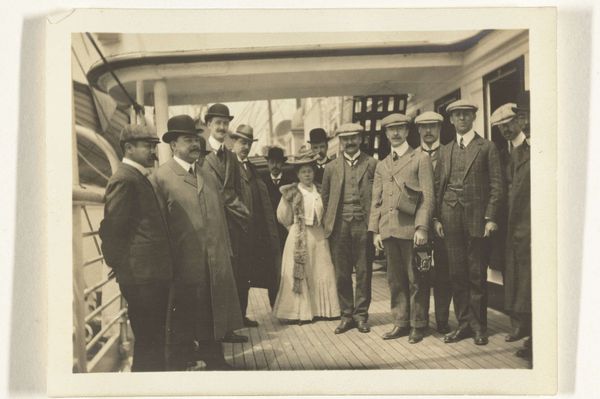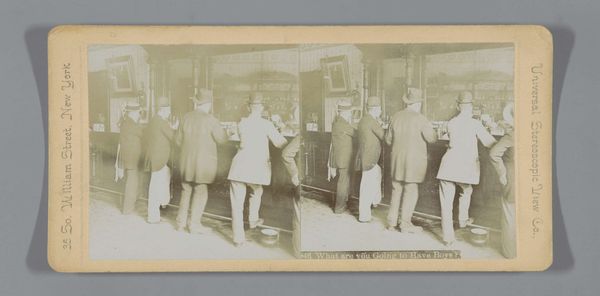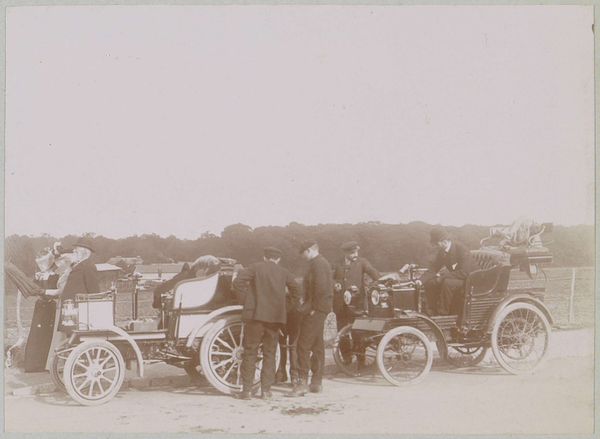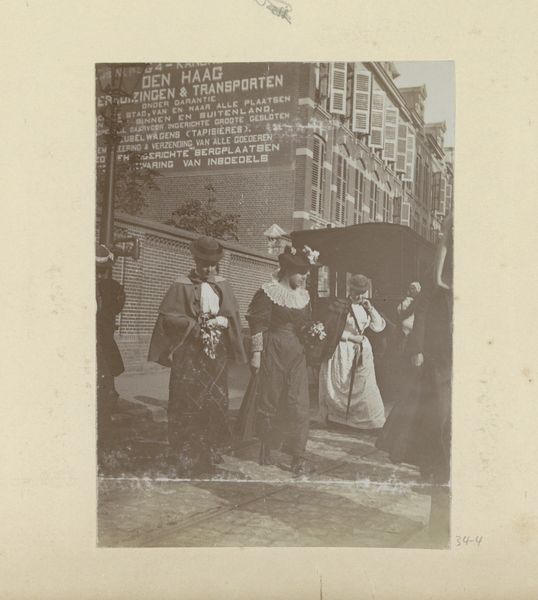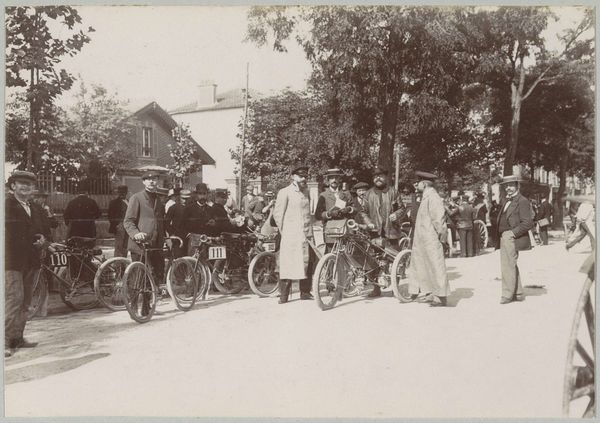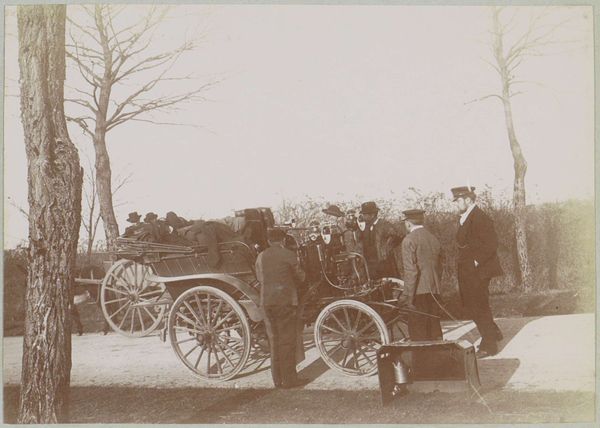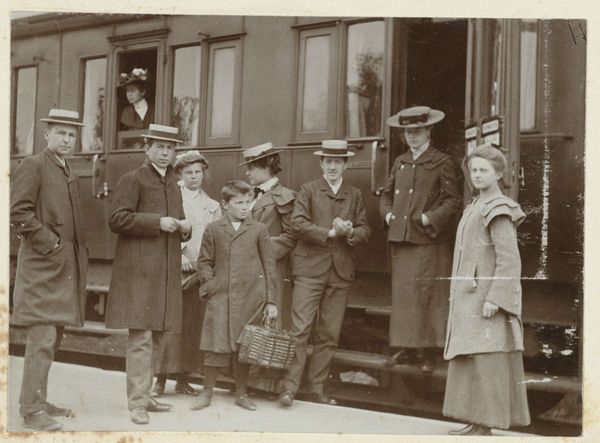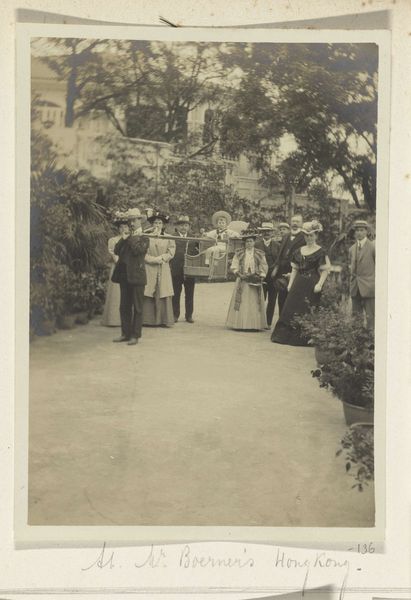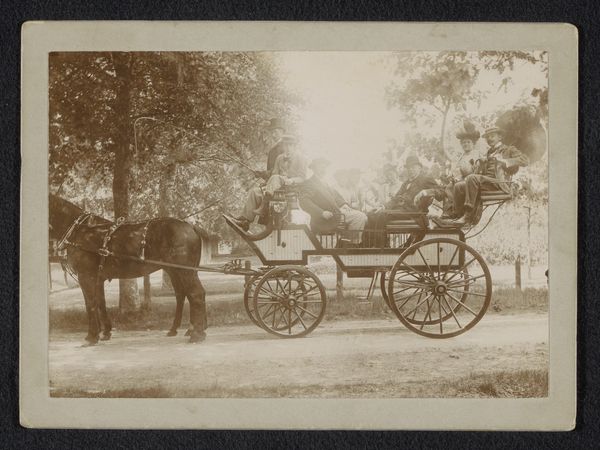
photography
#
portrait
#
16_19th-century
#
archive photography
#
street-photography
#
photography
#
historical photography
#
old-timey
Dimensions: 8.7 × 11.4 cm (image/paper); 27.7 × 21.1 cm (page/mount)
Copyright: Public Domain
Editor: This is John Thomson's "The Seller of Shell-Fish" from 1881. It’s a photograph, sepia toned, depicting what appears to be a street vendor surrounded by customers. I find myself curious about the social dynamic captured. How do you interpret this work? Curator: For me, this image screams material conditions. Look at the clear visual distinction between the seller, his cart, the very means of his production, and the clothing of the diverse clientele surrounding him. The materiality speaks volumes about class in Victorian London. Editor: Class, how so? Curator: Observe the roughspun clothes and work worn hands of the seller, next to the comparatively refined attire of at least two of his customers. Even the cart, its construction, signifies a level of investment, versus, say, selling from a blanket. Editor: So the very materials themselves become a social marker? Curator: Precisely. Thomson isn't just presenting a scene; he’s showing the very fabric – literal and figurative – of the economic stratification of his time. The shell-fish aren’t just lunch; they're a commodity exchanged within a complex system. How much did shell-fish workers themselves earn, and were they consumers of their own labor? Editor: That's fascinating, I never considered how the actual materials could reveal so much about the socioeconomic context. It's not just what’s being depicted, but what that depiction reveals. Curator: Exactly! And think about the labor involved in creating the photograph itself, from the glass plate negatives to the printing process – more hidden labor contributing to this "snapshot" of Victorian society. I wonder, does focusing on materiality change how you understand art history? Editor: Absolutely. Thinking about materials makes the image feel much more tangible, and less like just a historical record. It gives me a deeper understanding of the lives of the people depicted and those creating the depiction. Thank you!
Comments
No comments
Be the first to comment and join the conversation on the ultimate creative platform.
